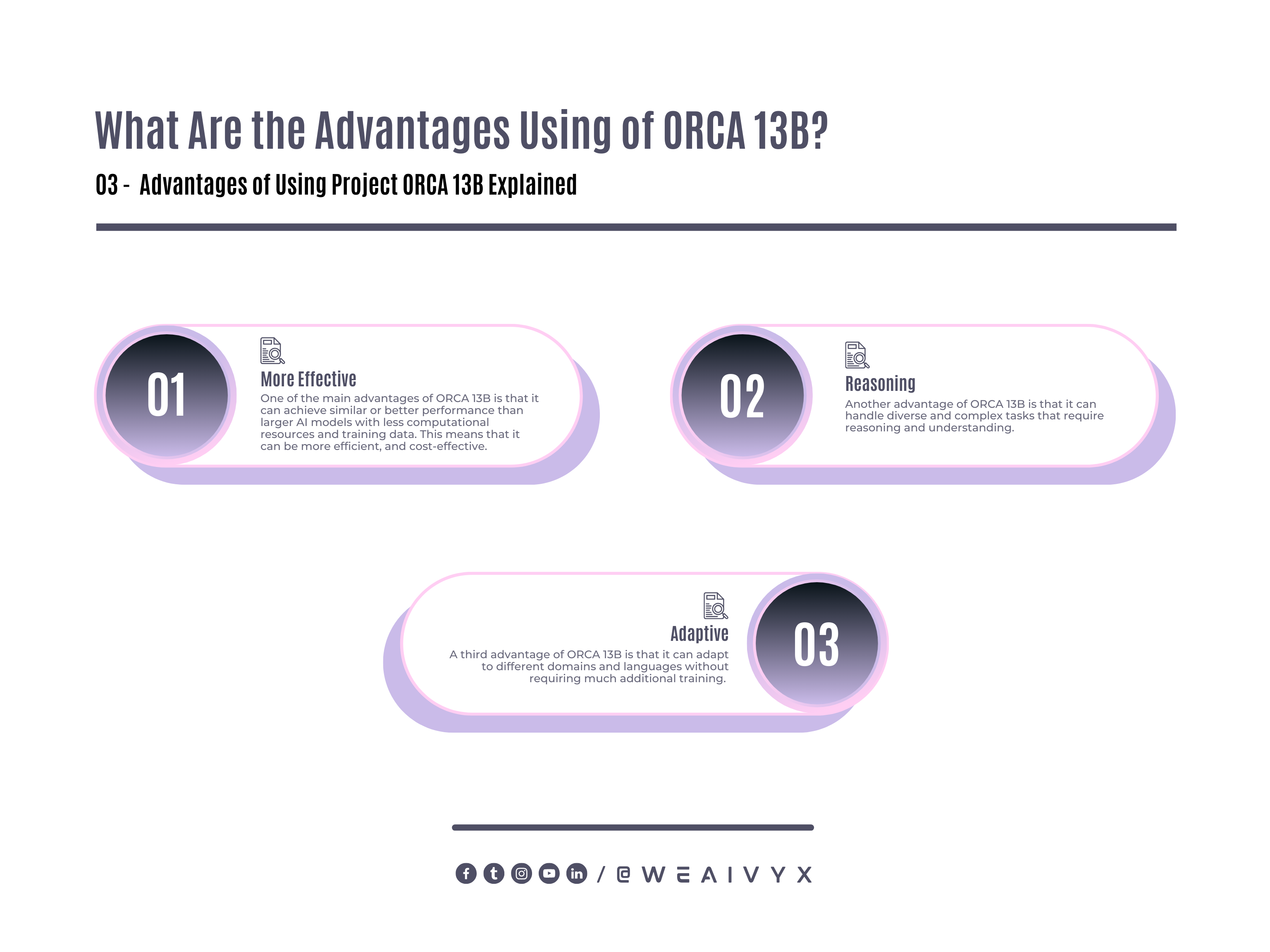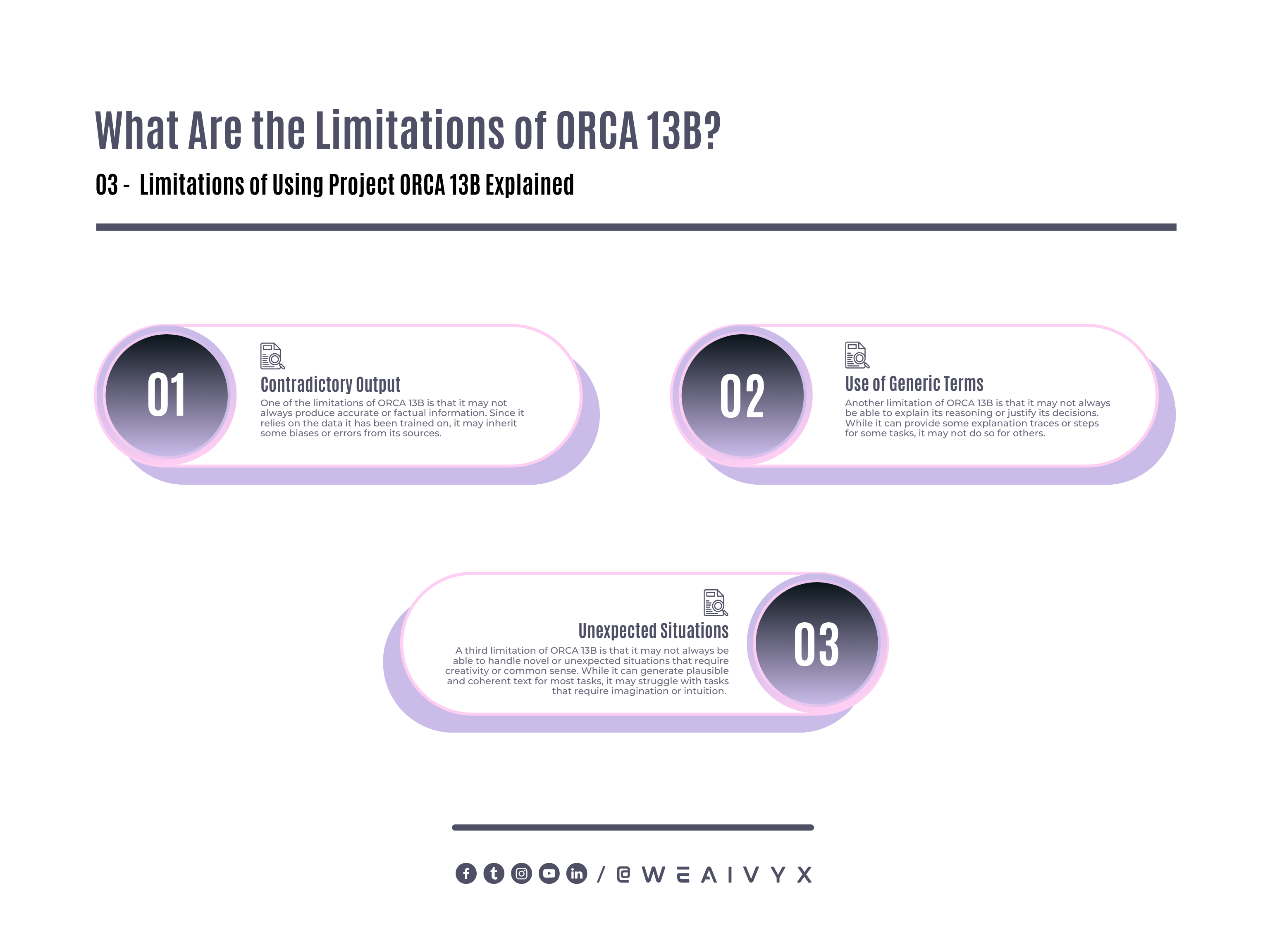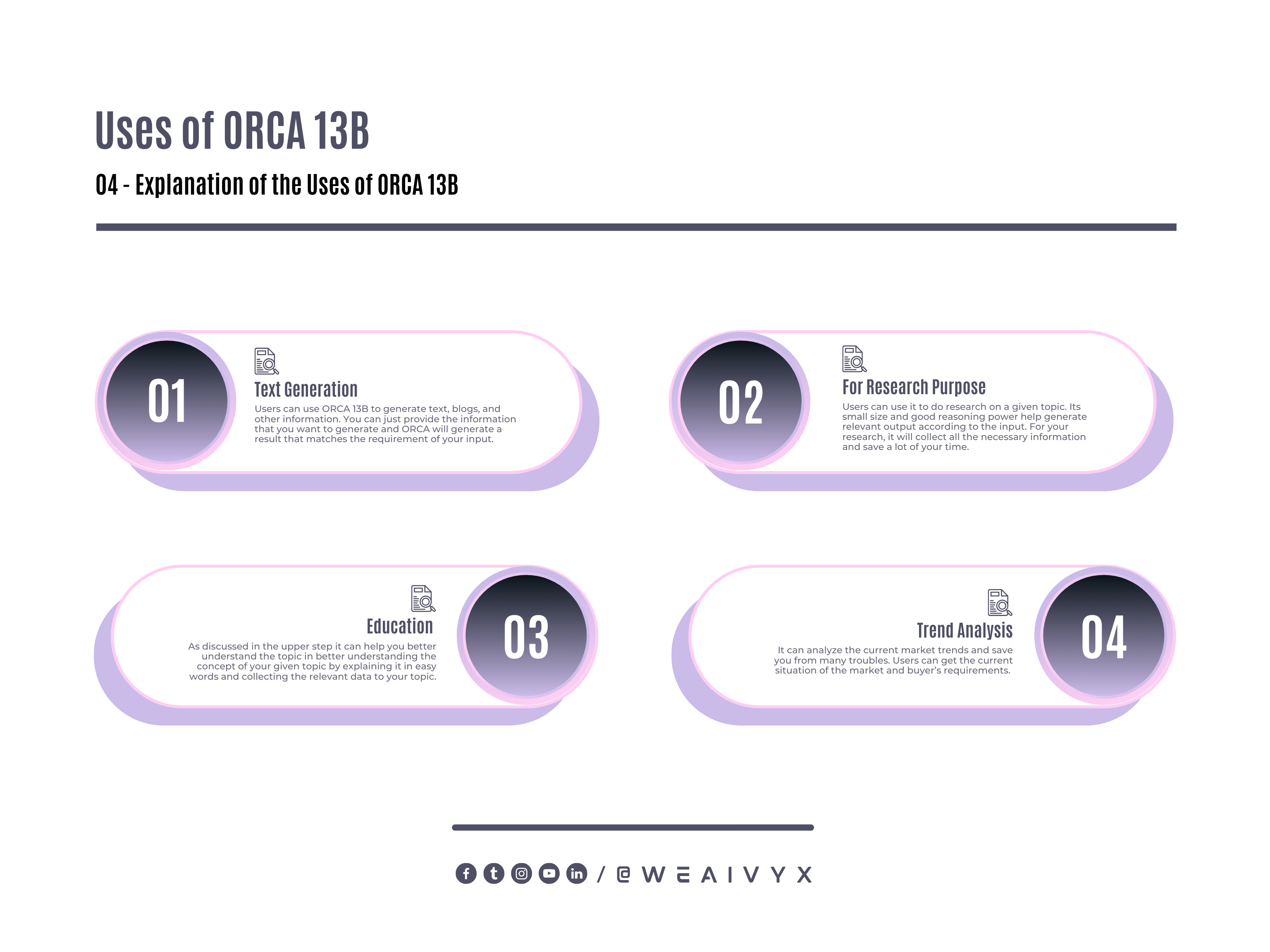ORCA is the new AI model that was announced by Microsoft in June 2023. Microsoft is working on this project with the collaboration of OpenAI.
ChatGPT-4 is used to train this model of Microsoft and it is supposed to handle more complex tasks than normal language models.
What is AI
AI, or artificial intelligence, is the field of computer science that aims to create machines and systems that can perform tasks that normally require human intelligence, such as understanding language, recognizing images, making decisions, and learning from data.
AI has been advancing rapidly in recent years, thanks to the availability of large amounts of data, powerful computing resources, and breakthroughs in algorithms and models.
What is Project ORCA
Project ORCA is a small language model that was trained on a massive corpus of text from the internet, as well as domain-specific data from various sources. It is an AI-generative model with 13 billion parameters.
It can imitate the behavior of a Large language model. Its small will make it easy to use and manage.
One of the most ambitious and exciting projects that Microsoft is working on is Project ORCA, which stands for Online Register for Classes with Analytics.
Project ORCA is a next-generation AI architecture that will eventually replace PaLM 2, the current AI model behind many of Microsoft’s products and services.
Project ORCA is still in training mode and is expected to be a key rival to OpenAI’s GPT-4 once launched.
Project ORCA was built with multimodal capabilities in mind, meaning that it can process and generate not only text but also images, audio, video, and other types of data.
This will allow for more diverse and rich conversational experiences for users across different platforms and devices.
Project ORCA was also designed to accommodate future developments in AI, such as improved memory and planning, context awareness, personalization, emotion recognition, and ethical reasoning.
This will enable more natural, intelligent, and human-like conversations between users and machines.
Project ORCA will be integrated with many of Microsoft’s products and services, such as Workspace apps, Search, Assistant, Cloud, and YouTube.
This will provide more reliable and consistent conversational services for users and businesses.
What Are the Features of Project Orca?
Project ORCA has some common features with other language models, such as:
Generative: It can generate natural language responses based on user inputs or prompts, without relying on predefined rules or templates.
Flexible: It can handle different types of conversational scenarios such as casual chat, information-seeking, opinion-sharing, role-playing, and storytelling.
Responsive: It can answer follow-up questions, admit its mistakes, challenge incorrect premises, and reject inappropriate requests.

What Makes It Different
ORCA 13B is different from other AI models because it is the first generative AI that is small in size as compared to the other large AI models.
It is trained using the data of ChatGPT-4, a state-of-the-art conversational model that can generate natural and engaging dialogues.
Its small size makes it easy to maintain and run, as well as more energy-efficient and environmentally friendly.
The small size of ORCA 13B does not affect its working of it. It will be a competition with the other AI language models available.
It uses the reasoning pattern of other models like ChatGPT, which can then also improve its reasoning.
ORCA 13B can also generate various types of content, such as poems, stories, code, essays, songs, celebrity parodies, and more, using its own words and knowledge.
ORCA 13B is a versatile and innovative AI model that aims to provide users with a rich and diverse experience.
How Does Orca 13B Work?
ORCA 13B, in particular, belongs to a category of AI models known as small language models (SLMs).
Language models are trained to understand and generate human language. They are often used in applications like speech recognition, text prediction, and machine translation.
ORCA 13B has been designed to understand and generate text, much like other language models.
However, what sets it apart can simulate the reasoning process of larger AI models, despite being significantly smaller in size.
This is a big deal in the AI community, as it shows that powerful AI capabilities can be packed into smaller, more manageable models. The way ORCA 13B learns is also unique.
It benefits from rich signals provided by GPT-4 (another larger AI model), which includes explanation traces, step-by-step thought processes, and other complex instructions.
This information is used to guide ORCA’s learning process, much like a teacher guiding a student.
ORCA’s ability to learn in this way allows it to understand context, reason through problems, and generate human-like text that is both coherent and contextually accurate.
It can be used to answer questions, write essays, summarize text, and even generate code, making it a versatile tool for a wide range of applications.
What Are the Advantages of ORCA 13B?
The advantages of using ORCA 13B are given below:
More Effective
One of the main advantages of ORCA 13B is that it can achieve similar or better performance than larger AI models with less computational resources and training data.
This means that it can be more efficient, cost-effective, and environmentally friendly than its counterparts.
Reasoning
Another advantage of ORCA 13B is that it can handle diverse and complex tasks that require reasoning and understanding.
For example, it can solve math problems, explain legal concepts, rewrite sentences, and create graphical artworks. These tasks are challenging for most AI models, but ORCA 13B can handle them with ease.
Adaptive
A third advantage of ORCA 13B is that it can adapt to different domains and languages without requiring much additional training.
For example, it can switch from English to Chinese or from science to art by simply changing the instruction or the input. This makes it more flexible and versatile than other AI models.

What Are the Limitations of ORCA 13B?
Despite its impressive capabilities, ORCA 13B is not perfect. It still has some limitations that need to be addressed in the future.
Contradictory Output
One of the limitations of ORCA 13B is that it may not always produce accurate or factual information.
Since it relies on the data it has been trained on, it may inherit some biases or errors from its sources.
It may also generate inconsistent or contradictory answers depending on the input or the instruction.
Use of Generic Terms
Another limitation of ORCA 13B is that it may not always be able to explain its reasoning or justify its decisions. While it can provide some explanation traces or steps for some tasks, it may not do so for others.
It may also use vague or generic terms that do not convey much information.
Unexpected Situations
A third limitation of ORCA 13B is that it may not always be able to handle novel or unexpected situations that require creativity or common sense.
While it can generate plausible and coherent text for most tasks, it may struggle with tasks that require imagination or intuition.
It may also fail to recognize or respond appropriately to humor, sarcasm, or emotions.

Comparison With Other Models
To compare ORCA 13B with other AI models, we need to consider different aspects, such as the size, performance, capabilities, and applications of the models.
Here are some examples of how ORCA 13B compares to other AI models:
Size
ORCA 13B has 13 billion parameters, which is much smaller than GPT-4 (1.75 trillion parameters) or ChatGPT 3.5 (175 billion parameters).
However, ORCA 13B can achieve similar or better performance than these larger models with less computational resources and training data.
This means that ORCA 13B can be more efficient, cost-effective, and environmentally friendly than its counterparts.
Performance
ORCA 13B has shown impressive performance in various benchmarks that measure its ability to reason and understand complex tasks.
For example, in the Big-Bench Hard (BBH) benchmark, which tests the model’s zero-shot reasoning skills, ORCA 13B surpasses Vicuna-13B (another instruction-tuned model) by more than 100% and reaches parity with ChatGPT.
In the AGIEval benchmark, which tests the model’s general intelligence across different domains and languages, ORCA 13B surpasses Vicuna-13B by more than 42% and outperforms GPT-4 by more than 10%.
These results demonstrate ORCA 13B’s superior capabilities in terms of reasoning and understanding.
Capabilities
ORCA 13B can handle diverse and complex tasks that require reasoning and understanding.
For example, it can solve math problems, explain legal concepts, rewrite sentences, and create graphical artworks.
These tasks are challenging for most AI models, but ORCA 13B can handle them with ease.
Moreover, ORCA 13B can adapt to different domains and languages without requiring much additional training.
For example, it can switch from English to Chinese or from science to art by simply changing the instruction or the input. This makes it more flexible and versatile than other AI models.
Applications
ORCA 13B can be used for a wide range of applications that require natural language understanding and generation.
For example, it can be used to answer questions, write essays, summarize text, and even generate code. It can also be used to create content such as poems, stories, songs, celebrity parodies, and images.
These applications can benefit various industries and domains, such as education, entertainment, business, and more.

How Can You Use ORCA 13B?
ORCA 13B is currently not available for public use it is currently in the training phase. You can also read more about the technical details of ORCA 13B in this paper. Microsoft has not announced any exact date for its public release.
Shortly, It will be available for public use. As it is an AI chatbot the steps to use it will be quite similar to other chatbots. Some points that you should keep in mind while using it are given below:
Instruction and Input
To use ORCA 13B, you need to provide instruction and input. The instruction tells the model what task you want it to perform, such as answering a question or writing an essay.
The input provides the data or the context for the task, such as a question or a topic.
For example, if you want ORCA 13B to answer a question about history, you can use this instruction:
Answer the following question about history:
And this input:
Who was the first president of the United States?
ORCA 13B will then generate an output like this:
The first president of the United States was George Washington. He was elected in 1789 and served until 1797.
He led the American Revolution against Great Britain and helped establish the Constitution and the federal government.
Different Instruction
You can also use different instructions and inputs to make ORCA 13B perform different tasks. With the change of the given instruction ORCA will produce different results.
If you give it instruction about writing a study on a given topic it will produce different results from the instruction to write lyrics for a new song or many other instructions.
Open-Source Model
ORCA 13B will be open-sourced by Microsoft shortly, meaning that anyone will be able to access and use it for free.
However, this does not necessarily mean that you can use it for commercial purposes without any restrictions or obligations.
Usually, open-source software comes with a license that specifies the rights and responsibilities of the users and developers.
There are different types of open-source licenses, such as MIT, GPL, Apache, BSD, and more.
Each license has its terms and conditions that may affect how you can use, modify, distribute, or monetize the software.
For example, some licenses may require you to share your source code or modifications with others or to give credit to the original authors. Some licenses may allow you to use the software for any purpose, while others may prohibit certain uses or impose certain limitations.
Some licenses may be compatible with other licenses, while others may not. Therefore, before you decide to use ORCA 13B for commercial purposes, you should carefully read and understand the license terms that Microsoft will provide when they release it.
You should also consult a legal expert if you have any doubts or questions about the license or your intended use of ORCA 13B.
Uses of ORCA 13B
The small size and reasoning power of ORCA 13B make it effective to use in many cases and can help the user get a better experience and easy-to-use interface. Some of the uses of ORCA 13B are given below
Text Generation
Users can use ORCA 13B to generate text, blogs, and other information. You can just provide the information that you want to generate and ORCA will generate a result that matches the requirement of your input.
For Research Purpose
Users can use it to research a given topic. Its small size and good reasoning power help generate relevant output according to the input. For your research, it will collect all the necessary information and save a lot of your time.
Education
As discussed in the upper step it can help you better understand the topic in better understanding the concept of your given topic by explaining it in easy words and collecting the relevant data to your topic.
Trend Analysis
It can analyze the current market trends and save you from many troubles. Users can get the current situation of the market and buyer’s requirements.
It can be the proper explanation of the behavior of the customer by analyzing and helping the company to better understand customer behavior.

Future of AI With ORCA
Orca 13B is a remarkable AI model that showcases the power of small-scale AI development.
By opening up Orca to the public, Microsoft is inviting the AI community to learn from its innovative architecture and contribute to its improvement.
This open-source initiative is a significant step towards democratizing AI and tapping into the collective wisdom of the community to advance the field of AI.
Orca 13B has a lot of potential for various applications, as it can understand and generate natural language with high accuracy and coherence.
It can also reason through complex problems and provide explanations for its answers, thanks to its rich learning signals from GPT-4.
Whether it’s for academic purposes, business insights, or any other domain, the possibilities with Orca 13B are limitless.
Conclusion
ORCA 13B is an innovative AI model that can understand and generate text for various tasks that require reasoning and understanding.
It is a smaller but smarter version of larger AI models that can simulate their reasoning process using rich signals from GPT-4, a powerful language model that can generate coherent and diverse texts across many domains.
ORCA 13B is trained using the data of ChatGPT-4, a state-of-the-art conversational model that can generate natural and engaging dialogues. It has many advantages over other AI models in terms of efficiency, versatility, and adaptability.
However, it also has some limitations in terms of accuracy, explainability, and creativity. You can use it to perform different tasks by providing an instruction and input.
For example, you can ask it to write a poem, a story, a code, an essay, a song, a celebrity parody, or any other type of content you want. ORCA 13B is a remarkable achievement in AI research that demonstrates the potential of large language models for human-like intelligence.
The future of AI with ORCA is also discussed in this blog. We hope you have enjoyed reading this blog post and learned something new. If you have any questions or feedback, please feel free to leave a comment below.
